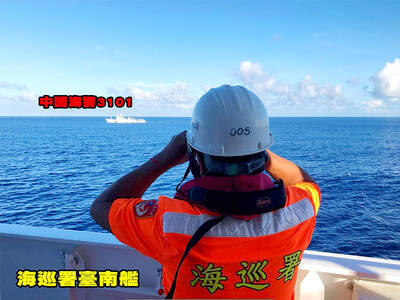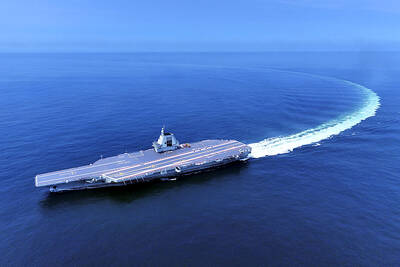Before the Weiguan Jinlong building in Tainan’s Yongkang District (永康) collapsed in the earthquake before dawn on Saturday, a young couple living on the 14th floor had already been given a clue that the building was unsafe.
However, it came too late.
Chen Yi-ting and her husband bought the apartment five years ago. They had a small hiccup with the mortgage — the first bank they approached had declined their loan application without stating why — but they found another lender and moved in with their infant daughter.

Photo: Yang Chin-cheng, Taipei Times
Soon after, according to Chen’s mother, one of the couple’s friends, who had ties to the first bank, told them that it had a policy of refusing loans to residents of the 17-story building due to its poor construction.
Chen, 35, and her husband, 38, are now in intensive care in two separate hospitals. She has a cracked skull and he has damaged lungs.
Their seven-year-old daughter is dead.

Photo: Wang Chieh, Taipei Times
“People from outside of the town, people like them, had no idea what was going on before they moved in,” Chen’s mother said as she waited in a hospital corridor outside the intensive-care unit where her daughter is. “They did not know the building was completed by the second developer after the first one went bust. They only found out after they signed the contract.”
The 21-year-old building is at the center of rescue efforts after the magnitude 6.4 quake struck at 3:57am on Saturday, killing 38 people and leaving more than 120 still missing deep in the rubble.
It was the only major high-rise building in the city of 2 million people to have completely collapsed. Its lower stories, filled with arcades of shops, pancaked on top of each other before the entire U-shaped complex toppled in on itself.
Sixty-one-year-old Kuo (郭) said residents of the building had long complained of many problems before the quake, such as tiles falling from walls, malfunctioning elevators and blocked pipes.
The couple paid NT$3.5 million (US$104,415) for the apartment.
“We are simple people. We did not think it [the initial loan refusal] might have been for some other reason,” Kuo said.
Government officials say the building had obtained its construction permit legally and withstood the magnitude 7.3 quake that hit the nation on Sept. 21, 1999, which left 2,415 dead and 11,305 injured.
“In the city government’s record, there was nothing wrong with it,” Tainan Public Works Bureau head Wu Chong-rong (吳宗榮) said.
Hsu Yin-hsuan, an architect hired by the city government to investigate the collapse, said the government had spent money after the 1999 disaster to buttress official buildings so they would be better able to endure future quakes.
However, “nothing similar has been done to privately owned buildings,” Hsu said.
The Weiguan Jinlong building secured its construction licence in 1992 and building was completed in 1994, government records show.
Two main firms that built the tower, Weiguan Construction and Da Hsin Engineering, have since gone out of business.
People at the scene of the collapse saw large rectangular, commercial cans of cooking-oil packed inside wall cavities exposed by the damage, apparently having been used as building material.
This was a problem found in some of the buildings that collapsed in other parts of Taiwan in the 1999 quake. The destruction at that time revealed that cooking-oil cans had been used as filler inside the walls of some buildings.
Tainan Mayor William Lai said he had asked prosecutors to investigate and that the government had hired three teams of civil engineers to inspect the building’s structure.
“When it’s completed, we’ll punish those who should be held accountable,” he said.

The Coast Guard Administration (CGA) yesterday said it had deployed patrol vessels to expel a China Coast Guard ship and a Chinese fishing boat near Pratas Island (Dongsha Island, 東沙群島) in the South China Sea. The China Coast Guard vessel was 28 nautical miles (52km) northeast of Pratas at 6:15am on Thursday, approaching the island’s restricted waters, which extend 24 nautical miles from its shoreline, the CGA’s Dongsha-Nansha Branch said in a statement. The Tainan, a 2,000-tonne cutter, was deployed by the CGA to shadow the Chinese ship, which left the area at 2:39pm on Friday, the statement said. At 6:31pm on Friday,

The Chinese People’s Liberation Army Navy’s (PLAN) third aircraft carrier, the Fujian, would pose a steep challenge to Taiwan’s ability to defend itself against a full-scale invasion, a defense expert said yesterday. Institute of National Defense and Security Research analyst Chieh Chung (揭仲) made the comment hours after the PLAN confirmed the carrier recently passed through the Taiwan Strait to conduct “scientific research tests and training missions” in the South China Sea. China has two carriers in operation — the Liaoning and the Shandong — with the Fujian undergoing sea trials. Although the PLAN needs time to train the Fujian’s air wing and

STRIKE: Some travel agencies in Taiwan said that they were aware of the situation in South Korea, and that group tours to the country were proceeding as planned A planned strike by airport personnel in South Korea has not affected group tours to the country from Taiwan, travel agencies said yesterday. They added that they were closely monitoring the situation. Personnel at 15 airports, including Seoul’s Incheon and Gimpo airports, are to go on strike. They announced at a news conference on Tuesday that the strike would begin on Friday next week and continue until the Mid-Autumn Festival next month. Some travel agencies in Taiwan, including Cola Tour, Lion Travel, SET Tour and ezTravel, said that they were aware of the situation in South Korea, and that group

Taiwanese celebrities Hank Chen (陳漢典) and Lulu Huang (黃路梓茵) announced yesterday that they are planning to marry. Huang announced and posted photos of their engagement to her social media pages yesterday morning, joking that the pair were not just doing marketing for a new show, but “really getting married.” “We’ve decided to spend all of our future happy and hilarious moments together,” she wrote. The announcement, which was later confirmed by the talent agency they share, appeared to come as a surprise even to those around them, with veteran TV host Jacky Wu (吳宗憲) saying he was “totally taken aback” by the news. Huang,